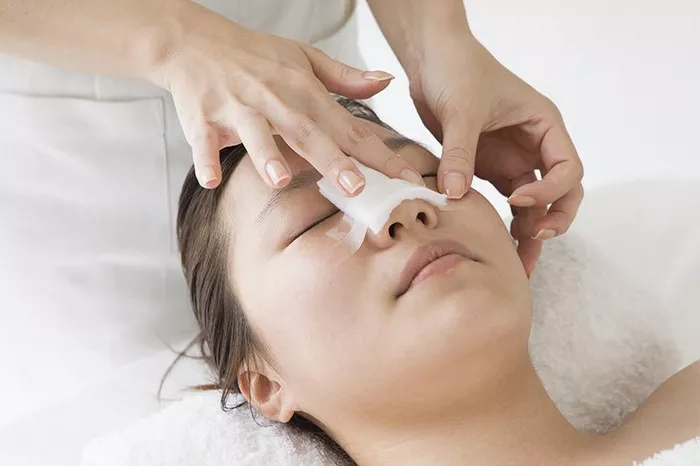Rhinoplasty, commonly known as a nose job, is a surgical procedure that is performed to reshape the nose. While rhinoplasty can improve the appearance of the nose, it is also a major surgery that involves a significant recovery period. One of the most common questions that patients have after rhinoplasty is how long does nose swelling last. In this article, we will explore the timeline for nose swelling after rhinoplasty and provide a comprehensive guide to help you understand what to expect during your recovery.
Understanding the Healing Process
Before we discuss the timeline for nose swelling after rhinoplasty, it’s important to understand the healing process. Rhinoplasty involves making incisions in the nose and reshaping the underlying bone and cartilage. After the procedure, the nose will be bandaged and a splint will be placed over the nose to help support the new shape. During the healing process, the body will begin to repair the tissue and create new blood vessels. This process can cause swelling, bruising, and discomfort.
Timeline for Nose Swelling After Rhinoplasty
The timeline for nose swelling after rhinoplasty can vary depending on a number of factors, including the extent of the surgery, the patient’s individual healing process, and the surgical techniques used. In general, however, patients can expect to experience swelling for several weeks after the procedure.
-
Immediately After Surgery
Immediately after rhinoplasty, patients will experience significant swelling and bruising around the nose and eyes. The nose may also be congested and difficult to breathe through. This initial swelling is caused by the trauma of the surgery and typically lasts for a few days.
-
First Week
During the first week after rhinoplasty, the swelling around the nose and eyes will begin to subside. However, the nose itself may appear more swollen than before the surgery. This is because the tissue is still healing and the body is creating new blood vessels. Patients may also experience some discomfort and may need to take pain medication.
-
First Month
During the first month after rhinoplasty, patients can expect to see a significant improvement in the appearance of their nose. The majority of the swelling will have subsided, although there may still be some residual swelling around the tip of the nose. Patients may also experience some numbness or tingling around the nose and upper lip.
-
Three to Six Months
Between three and six months after rhinoplasty, patients will continue to see gradual improvements in the appearance of their nose. The majority of the swelling will have subsided, although there may still be some residual swelling in the tip of the nose. Patients may also notice that their nose feels stiff or firm, which is a normal part of the healing process.
-
One Year or More
After one year or more, patients can expect to see the final results of their rhinoplasty. The swelling will have completely subsided, and the nose will have settled into its final shape. Patients may also notice that the skin around their nose feels softer and more pliable.
Tips for Reducing Swelling After Rhinoplasty
While some swelling is a normal part of the healing process after rhinoplasty, there are steps that patients can take to help reduce swelling and promote healing. Here are some tips to keep in mind:
-
Keep Your Head Elevated
Keeping your head elevated can help to reduce swelling and improve circulation. It’s important to sleep with your head elevated for the first few weeks after surgery, and to avoid bending over or lifting heavy objects.
-
Apply Cold Compresses
Applying cold compresses to the nose can help to reduce swelling and alleviate discomfort. Patients should apply cold compresses to the nose for 15-20 minutes at a time, several times a day.
-
Avoid Strenuous Activity
Patients should avoid strenuous activity and exercise for at least two to three weeks after rhinoplasty. Strenuous activity can increase blood flow to the nose, which can lead to swelling and discomfort.
-
Follow Your Surgeon’s Instructions
It’s important to follow your surgeon’s post-operative instructions carefully to ensure a smooth and successful recovery. This may include taking medication, avoiding certain foods and drinks, and using saline sprays to keep the nose moisturized.
-
Be Patient
Rhinoplasty is a major surgery, and it can take several weeks or even months for the swelling to subside completely. It’s important to be patient and allow your body to heal at its own pace.
When to Contact Your Surgeon
While some swelling and discomfort are normal after rhinoplasty, it’s important to contact your surgeon if you experience any of the following symptoms:
- Excessive bleeding
- Fever or chills
- Difficulty breathing
- Severe pain or discomfort
- Redness or warmth around the nose
These symptoms may be a sign of a more serious complication and require immediate medical attention.
Conclusion
In conclusion, nose swelling after rhinoplasty can last for several weeks or even months. While this can be a frustrating part of the recovery process, it’s important to be patient and allow your body to heal. By following your surgeon’s post-operative instructions and taking steps to reduce swelling, you can promote healing and achieve the best possible results from your rhinoplasty. If you have any concerns about your recovery, don’t hesitate to contact your surgeon for guidance and support.

